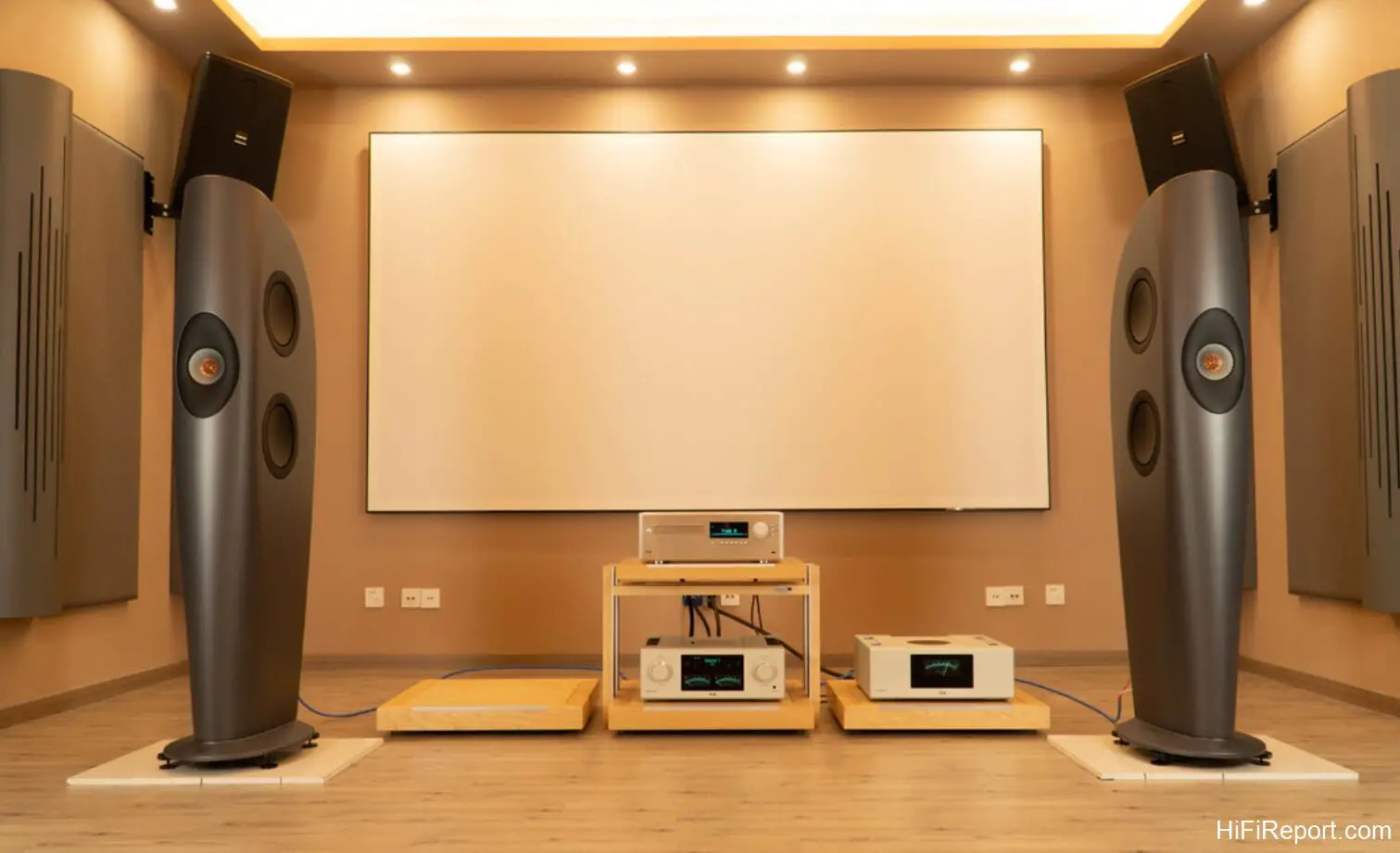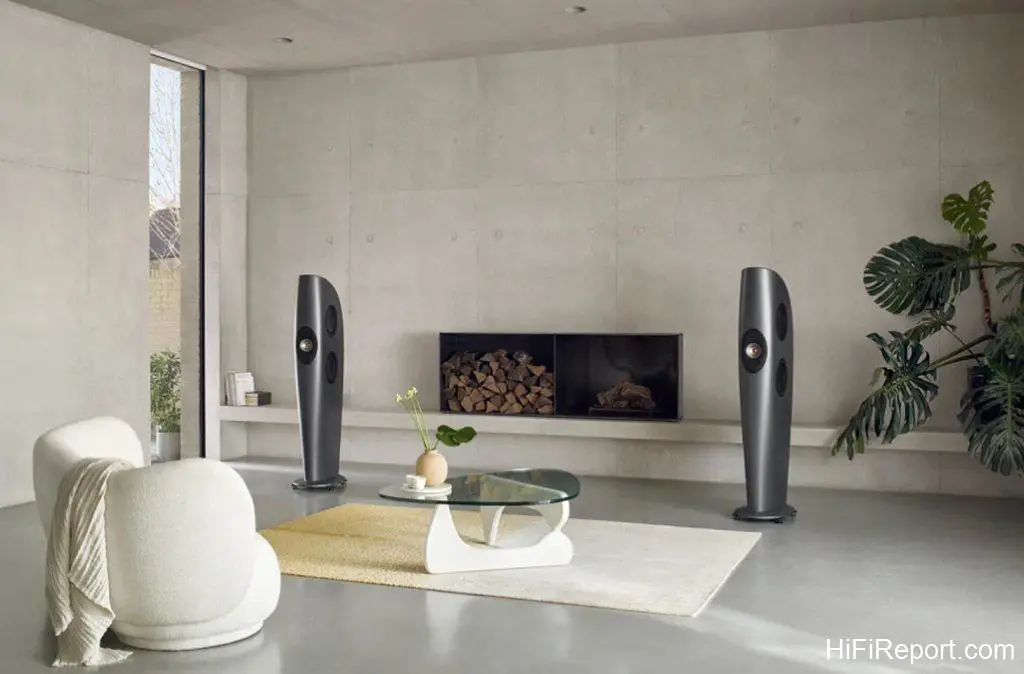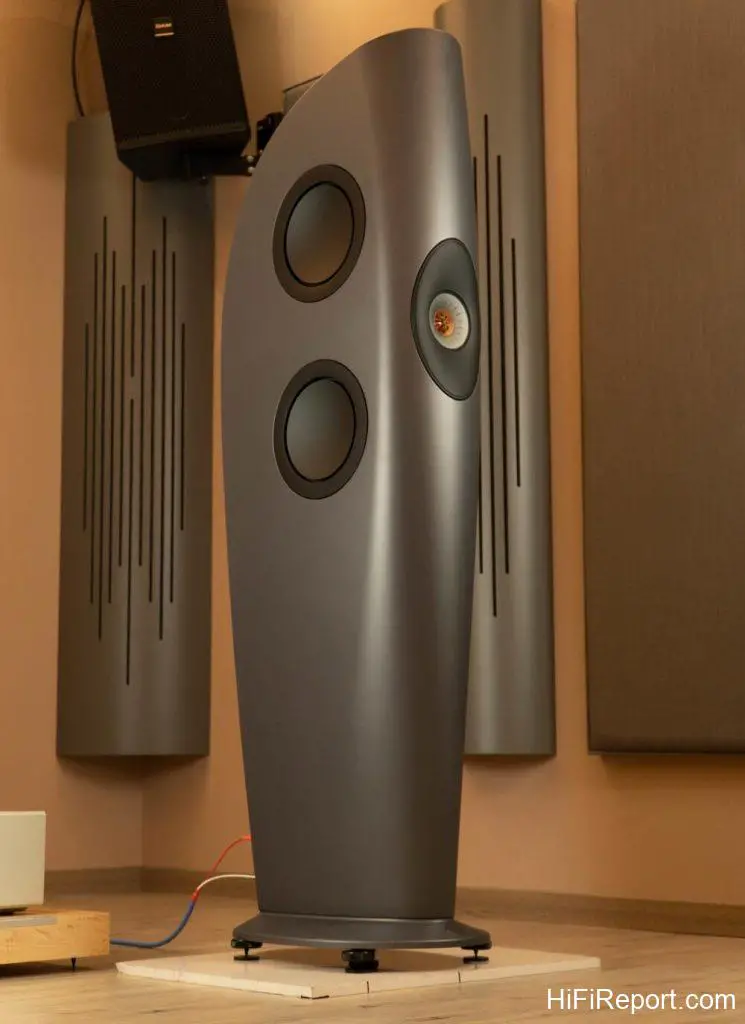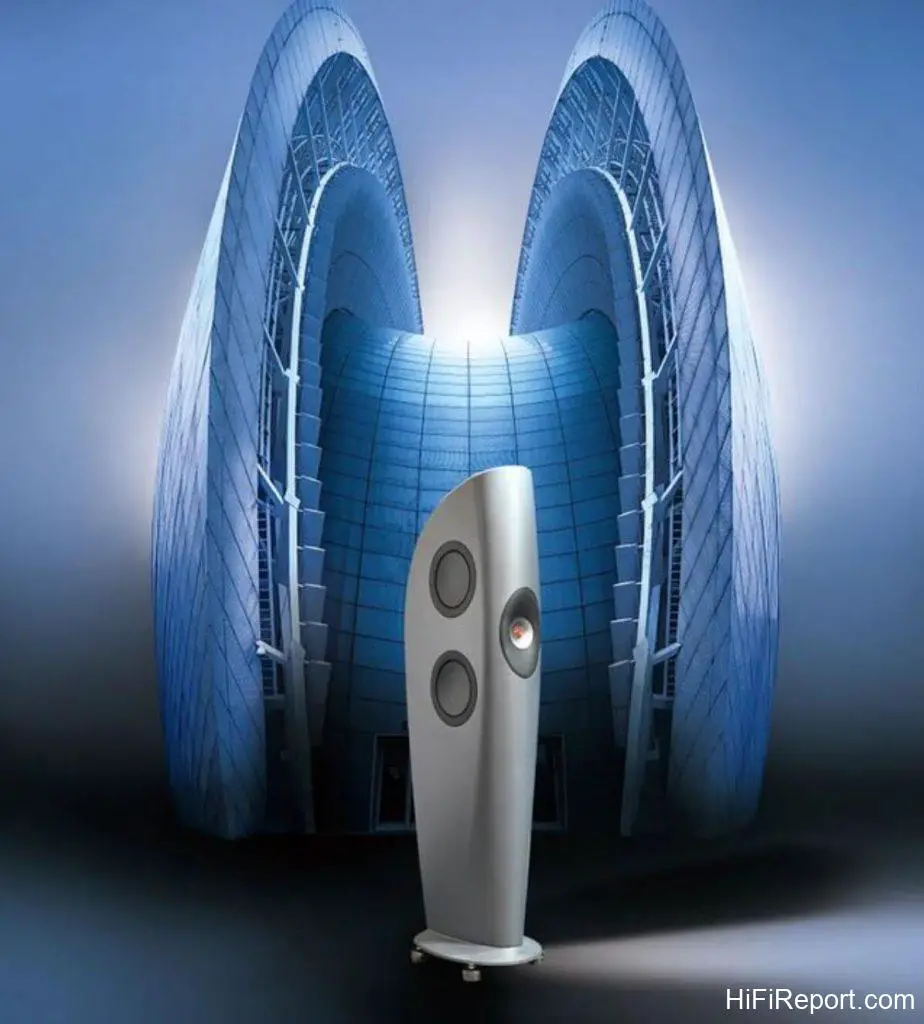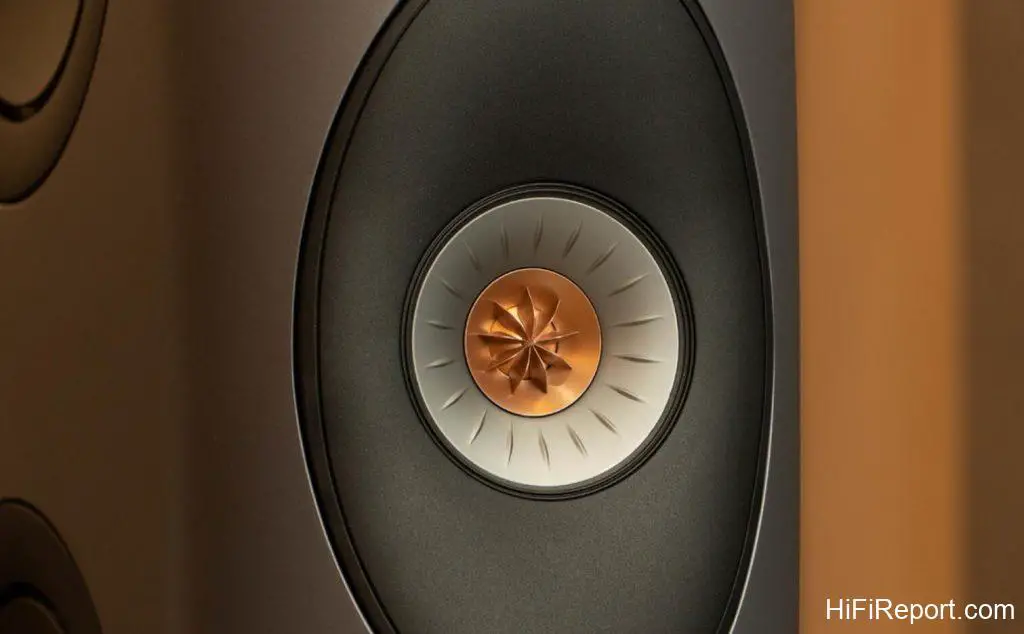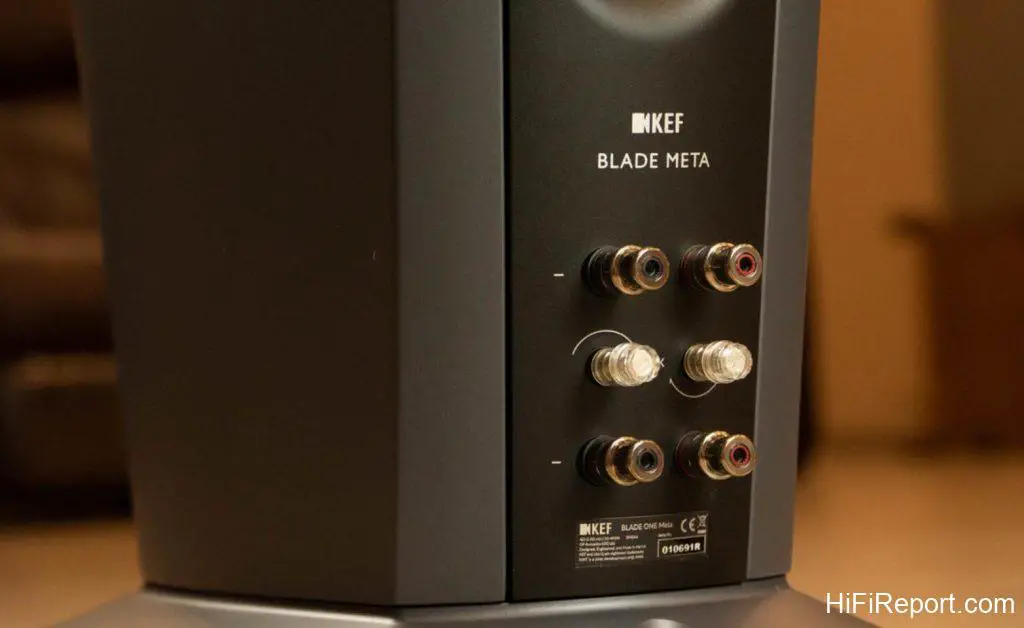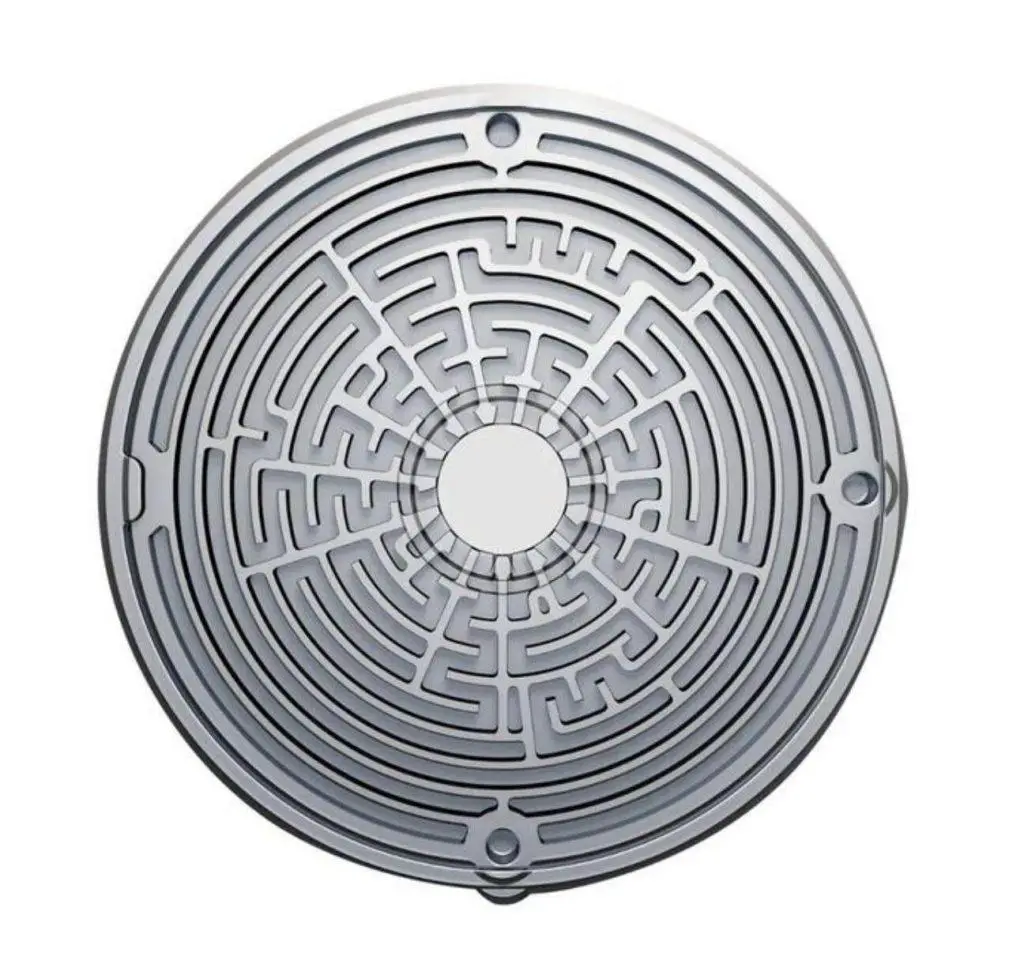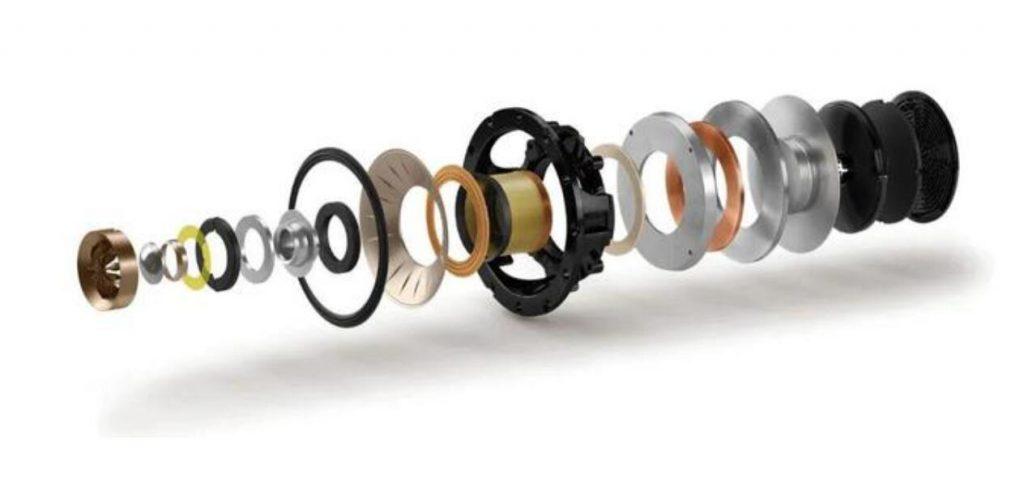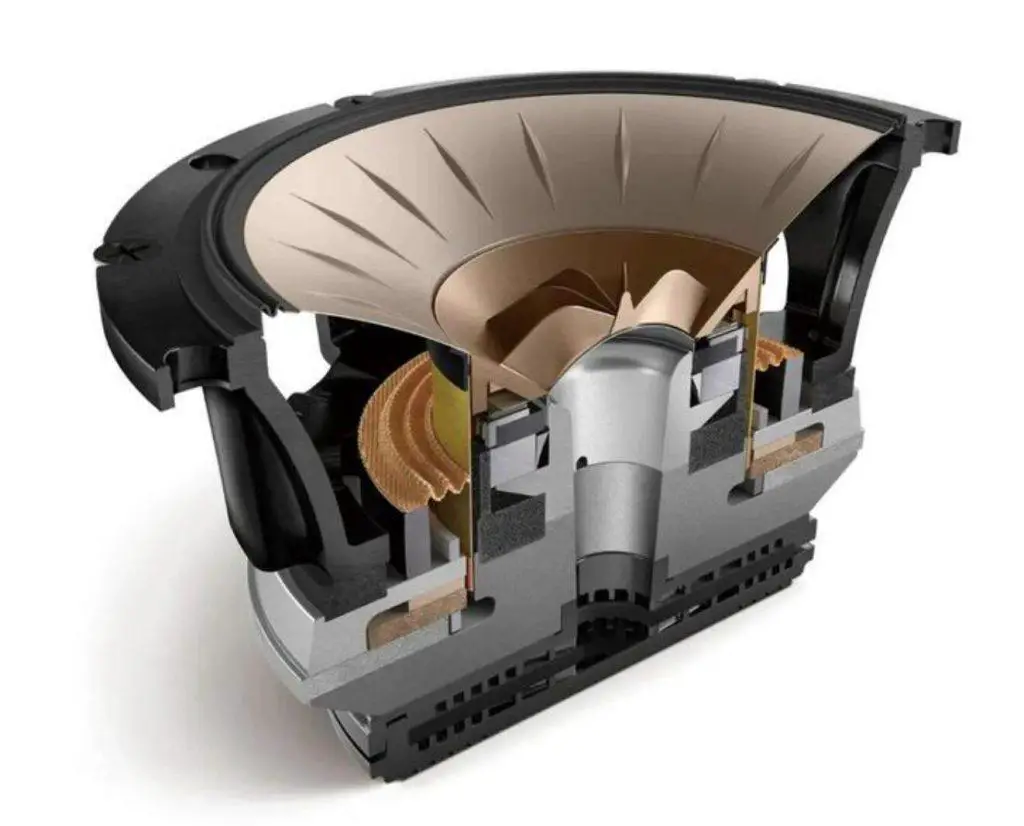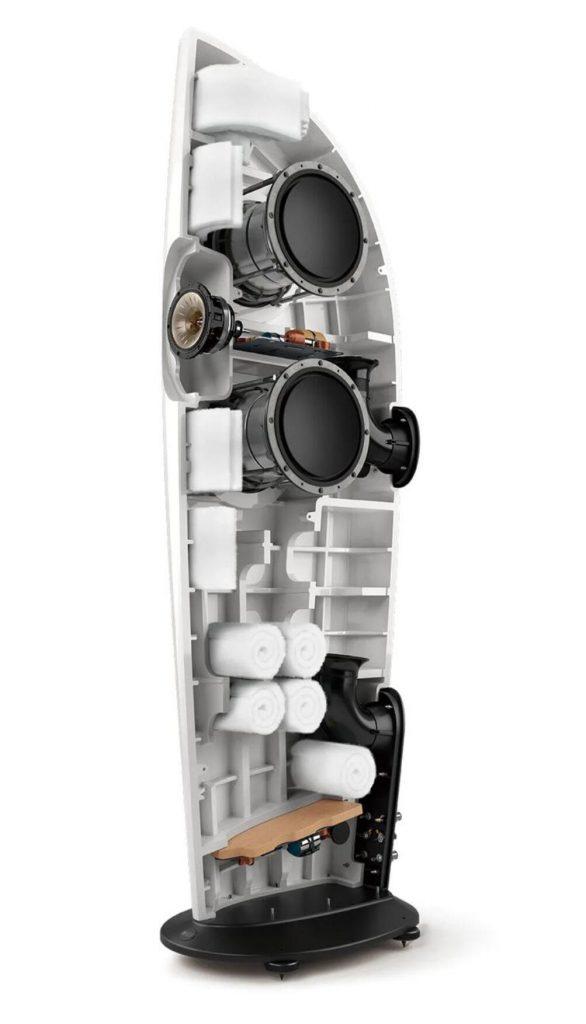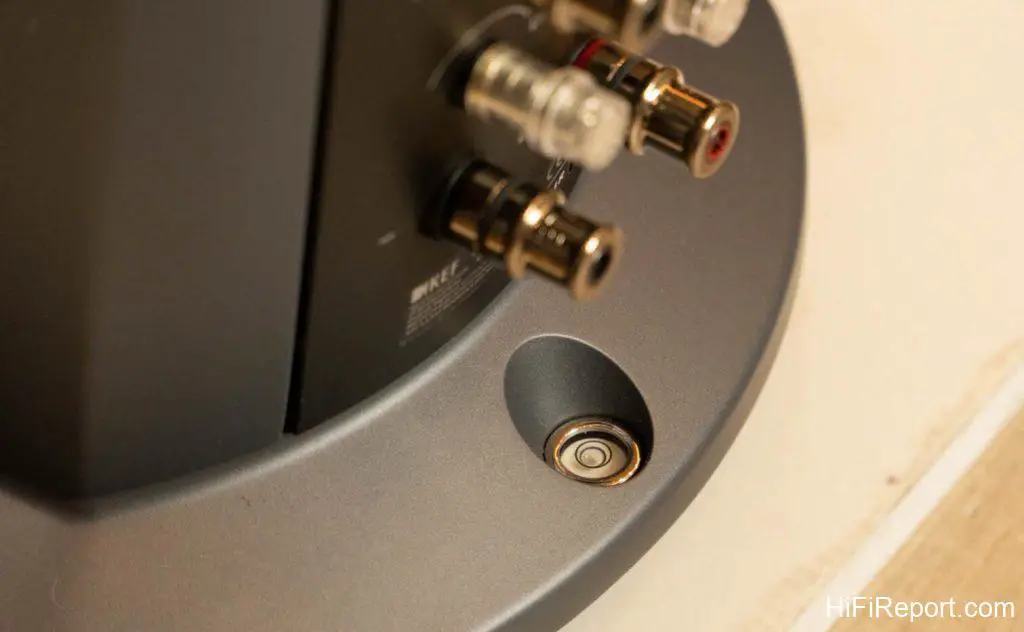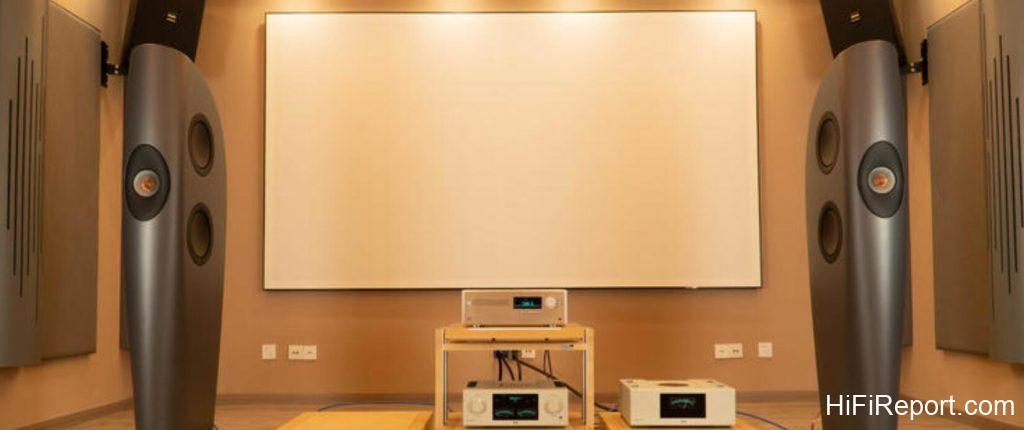KEF Blade One Meta Review
In audio craftsmanship, KEF reigns as an emblem of unparalleled quality. With a legacy spanning over 60 years, KEF has consistently pushed the boundaries of acoustic innovation. Today’s focus is the KEF Blade One Meta – a speaker that fuses artistry and advanced technology to redefine sonic mastery.
Join us on a journey as we delve into the heart of the Blade One Meta. We’ll uncover the groundbreaking Metamaterial Absorption Technology (MAT) and the iconic Uni-Q Technology, exploring how they collaborate to create an immersive auditory experience.
Beyond specifications, the Blade One Meta evokes emotion through its captivating soundstage and dynamic range. It delivers an authentic connection to the music, from orchestral crescendos to intimate vocals.
Through precision design, the Blade One Meta stands as both an auditory marvel and a visual delight. We’ll explore its artful curves and innovative materials that elevate it beyond a speaker to a work of art.
Whether you’re an audiophile seeking sonic purity or a music lover craving new dimensions, the KEF Blade One Meta promises an unmatched sonic odyssey.
Join us as we uncover the fusion of technology, art, and sound in the KEF Blade One Meta – an invitation to experience music anew. Let’s embark on this extraordinary journey together.
About KEF
With a rich history spanning 62 years, KEF was established in 1961 by Raymond Cooke, a former British Broadcasting Corporation (BBC) engineer. Originally headquartered at the Kent Engineering and Foundry in Maidstone, Kent, United Kingdom, the brand’s vocabulary was derived from this location, setting the stage for its legacy. Since its inception, KEF has been dedicated to acoustic innovation, offering unparalleled sound experiences.
Since its inception, KEF has maintained a strong commitment to acoustic innovation, providing exceptional sound quality. The company boasts a robust capacity for autonomous research and development in audio, a unique technological advantage underpinning KEF’s leadership in acoustic technology.
KEF was also the pioneer in introducing computer technology to speaker testing and design, leveraging this advantage to achieve precise pairing of speakers with an accuracy of up to 0.5 dB. From pioneering revolutionary speaker and high-powered subwoofer series to successful forays into wireless speakers, portable audio systems, and headphones, KEF remains dedicated to providing music enthusiasts with authentic and highly-resolving auditory enjoyment indoors and outdoors.
In 2021, KEF celebrated its sixtieth anniversary, solidifying its status as a brand excellence and acoustic superiority leader. From early breakthroughs in composite materials to pioneering the groundbreaking Reference series that has set industry benchmarks, KEF’s continuous innovation in technology, design, and craftsmanship has consistently yielded top-tier products that shape the course of their era.
Founder Cooke’s unwavering dedication to the principles of perfect engineering gradually elevated KEF to the ranks of the world’s premier speaker companies. In 1979, Cooke was bestowed with the Order of the British Empire by Queen Elizabeth II, further acknowledging his exceptional contributions. The Uni-Q concentric coincident technology, introduced in 1988, has become a signature KEF technology, evolving through twelve generations. In their latest flagship model, Blade, KEF has further manifested the “Uni-Q Technology,” and the Blade speaker has become synonymous with exceptional audio excellence.
Design
With a deep understanding of aesthetics, KEF frequently collaborates with design masters. The visually stunning design of the Blade series is the result of a partnership between the KEF team and Eric Chan from the New York design company ECCO Design. The inspiration for its visual design comes from the modernist artwork “Bird in Space” by sculptor Brancusi.
The major challenge was creating a high-performance acoustic cabinet for a large speaker and maintaining an exquisite appearance while accommodating the acoustic characteristics of the Uni-Q Technology. This demanded a spacious upper portion of the cabinet while avoiding any sense of bulkiness.
The graceful curves of the cabinet design not only offer listeners a unique aesthetic experience but also eliminate the potential for secondary sound coloring caused by internal speaker resonances. The acoustic inert cabinet of the Blade features a carefully designed complex parabolic curve that tapers gently from top to bottom and front to back. This ensures a continuous, uninterrupted surface, preserving sound clarity as if it were a meticulously sculpted piece of art.
On the all-new KEF Blade One Meta speaker, the front features the twelfth generation Uni-Q Technology unit, while each side is equipped with two pairs of 9-inch resonant-cancelling bass drivers for a total of four. These bass drivers are installed back-to-back to eliminate excessive energy that could lead to sound coloration and prevent the powerful low-frequency energy from transferring to the cabinet. Each pair of drivers has an independent chamber to reduce the use of damping materials. The acoustic inert cabinet is crafted from ultra-high-density polyurethane resin and features a meticulously designed complex parabolic curve to maximize the elimination of sound-blurring resonances.
The Blade One Meta employs a 3-way, 6-unit design. It’s a challenging configuration to get right, as it needs to perform well without being overly demanding on amplification, avoiding the label of an “amplifier killer.” After exploring various options, a solution was found through connections to T+A’s flagship integrated amplifier, the PA3100 HV, and the PS 3000 HV external power supply. Both units share the same size and shape.
The amplifier design here is quite intriguing. The PS 3000 HV external power supply only provides power to the rear stage of the PA3100 HV, while the front stage continues to draw power from the built-in amplifier supply. This setup provides the power amplifier section with a larger power reserve to enhance driving force. The power supply is substantial, occupying over half of the chassis space, and the startup time after powering on takes about 1 minute.
Regarding output power, the PA3100 HV delivers 300W (8 ohms) / 500W (4 ohms) per channel. With such a robust power supply design, the PA3100 HV/PS 3000 HV combination outperforms many separate preamp and power amp setups by a significant margin.
Metamaterial Absorption Technology
Metamaterial Absorption Technology is referred to as MAT in official KEF terminology. This technology involves an acoustic absorption structure applied to the rear of speaker units. KEF employs Metamaterials to craft this structure, specially developed using existing materials.
Its appearance resembles a complex maze. Compared to the typical absorption rate of 60% for regular speakers, MAT can absorb 99% of the noise generated from the rear of the speaker unit. By eliminating unnecessary noise from the rear of the unit, MAT technology enhances sound’s purity, authenticity, and naturalness.The 2022 release of the KEF Blade Meta series maintains a similar appearance to its predecessor.
However, upgrades in the “invisible” aspects, such as the units and crossovers, play a decisive role in sound quality. The latest evolution of MAT material absorption components is particularly noteworthy, developed through collaboration between KEF and the Acoustic Metamaterials Group (AMG).
This technology uses existing materials and specially designed structures, exhibiting entirely new attributes that natural materials lack. The MAT material absorption component comprises a “small disc” with a diameter of approximately 80mm, featuring around 15 maze-like pipes in each layer. Thanks to its double-layer structure, each MAT component comprises 30 pipes with an overall thickness of around 11mm. The length and shape of each pipe within the MAT absorption component are precisely calculated.
Each pipe functions as a 1/4-wavelength resonator, corresponding to a specific resonant frequency. The collaboration of these 30 pipes allows MAT to effectively absorb 30 specific harmful back wave resonance frequencies above 620Hz. The absorption coefficient sharply increases starting from 620Hz, nearing one after 1kHz.
The MAT tuning component should be considered. Compared to traditional methods of handling back waves from speaker units (such as some methods that absorb around 60% using cone-shaped pipes), MAT can absorb 99% of harmful resonance frequencies and noise above 620Hz from the rear of the unit. This notably improves the purity and accuracy of mid-to-high-frequency sound. This showcases the remarkable capabilities of MAT as a high-tech solution, often referred to as a “sound black hole.”
Uni-Q Technology
Uni-Q Technology aims to achieve a single-point sound source by focusing low, mid, and high frequencies at a single point. The perfectly calibrated driver unit covers the entire frequency range of the speaker and is configured to make all frequency sounds seem as though they originate from a single source. This results in a significantly more accurate soundstage, allowing the distinct and clear timbre to spread across a wide area evenly.
Uni-Q Technology requires using KEF’s exclusive Uni-Q Technology unit to achieve this effect. It’s also a hallmark of KEF’s sound signature. To achieve the ideal acoustic effect of Uni-Q, four low-frequency driver units are arranged in tight symmetry around a two-way Uni-Q driver unit, with its internal mid and high frequencies also featuring Uni-Q Technology.
In traditional speaker design, different audio driver units emit sound waves from different positions, leading to mutual interference between driver units. Uni-Q Technology eliminates this interference, producing an exceptionally clear, precise sound that sounds more realistic and immersive.
KEF pioneered digital technology, with laboratory testing standards ensuring pairing accuracy within 0.5dB for each speaker pair. KEF engineers start by modeling the crossover network on a computer, initially assessing the overall performance of the crossover and then evaluating each component’s sound. This process allows for selecting components with the lowest distortion and smoothest response.
The proud 12th-generation Uni-Q Technology unit features an entirely new design for the mid-range unit with ultra-low distortion. A copper ring is placed in the gap between the voice coil and the magnet, significantly reducing inductance and the associated voice coil displacement. Improving high-frequency diffraction greatly enhances every detail, especially those of plucked and percussive instruments.
Enhancing low-frequency performance is achieved through a newly designed special geometric aluminum/paper composite bass diaphragm. This design offers higher rigidity, lower resonance frequency, and lighter diaphragm mass. Coupled with a new magnetic circuit design and a sturdy frame, the bass diaphragm can piston more perfectly, reducing distortion and delivering purer, more impactful low frequencies.
Sound Performance
What should you listen to when it comes to having large speakers and powerful amplifiers? Let’s start with a piece of symphonic music; it feels almost disrespectful not to listen to symphony music with such equipment. I pulled out Mark Ermler’s complete rendition of “Swan Lake” from my drawer, directly skipping to the “Russian Dance” excerpt in Act III. Right from the moment the orchestra bursts into the piece’s opening, Blade One Meta delivers an incredibly swift and powerful performance with a fierce and clean low end.
Then comes the solo violin part, emanating from the Blade One Meta with a sensation of crispness and translucence. The sound is clean thorough, and offers exceptional clarity. How can I put it in metaphorical terms? It’s like being on a mountaintop, with fresh, transparent air and a hint of coolness.
As the music enters the pivotal part, with the gradual rise in sound pressure, the Blade One Meta maintains its clarity in detail and layers even under the monumental crescendo.
The high frequencies sound stable, and even after the music ends, you can distinctly hear the reverberation of the concert hall.
Speaking of sensations, especially that refreshing breath, when I listened to Faye Chan’s rendition of “Across the Water,” the sound system’s effect made me feel like it perfectly complemented the record. It conveyed the music’s atmosphere with its gentle, flowing rhythm. The instrumentals and vocals felt like a gentle breeze, soft and soothing, the vocals full and rich, without that heavy “nasal” quality. The vocals were not only rich but also maintained excellent clarity. Speaking of vocal recordings, “Belafonte at Carnegie Hall” is a famous live recording.
Although this recording is from the 1950s, the effect is still impressive when played on modern equipment. The sound feels authentic, and Blade Meta’s remarkable resolution and transparency create a spatial soundstage. Even though the accompanying instrumental sound in the record itself isn’t particularly large, Blade One Meta can still clearly reproduce the texture and timbre of the instrument’s sound, with vivid, lively, and lifelike vocals.
In terms of bass performance, the Blade One Meta offers clean, fast, tight, and powerful bass. It doesn’t provide the booming bass that’s simply about raw energy. Instead, it delivers textured and clear bass. You can discern the texture of drumsticks striking the drum skin and the resonance effect of the drum body vibrating.
Conclusion
Before listening to the Blade One Meta, I had previously experienced listening to the Blade One at a dealer’s showroom that provided a listening session. This time, with the Blade One Meta, the most prominent impression it left me was the difference in clarity and tonality. These differences primarily revolve around the coaxial unit, where the new Blade One Meta exhibited noticeable improvements in transparency, particularly in mid and high frequencies. The rendering of tonality was more nuanced, presenting clearer, cleaner, more open, and transparent details.
With the support of the 12th generation Uni-Q Technology and the MAT technology, the mid and high frequencies are cleaner, bursting with energy yet not overly bright. Brass instruments display vivid and brilliant colors, with transparency that reveals a warm and polished luster. The texture is luxurious, and during moments of orchestral crescendo, the high-density sonic energy easily fills the space.
The presented soundstage is astonishing, with full and rich cello bass, clear and defined viola mid-tones, and distinct violin sounds that interact harmoniously yet remain unified. The sense of studio reverberation and the spatial positioning and form of the instruments can be felt. The mid and high frequencies of the KEF Blade One Meta are transparent and natural, with a touch of richness and luxury. Across the entire frequency range, the density of sound quality, sense of layers, and the soundstage depth are all satisfying.
The presentation accurately reproduces the grand scale of instrumental arrangements and the atmosphere of recordings, providing an effortless and pleasant listening experience. If auditioned in a high-end listening room, the sound quality could reach an even higher level.
KEF Blade One Meta Specifications
- Design
- Three-way bass reflex
- Single apparent source
- Drive Units
- Uni-Q driver array:
- HF: 25 mm (1 in.) aluminium dome with MAT
- MF: 125 mm (5 in.) aluminium cone
- Bass units:
- LF: 4 x 225 mm (9 in.) aluminium cone, force cancelling
- Uni-Q driver array:
- Frequency Range
- Free Field (-6dB): 27Hz – 45kHz
- Typical In-Room Bass Response (-6dB): 20Hz
- Frequency Response (±3dB): 35Hz – 35kHz
- Crossover Frequency
- 350Hz, 2kHz
- Amplifier Requirements
- 50-400W
- Sensitivity (2.83V/1m)
- 88dB
- Harmonic Distortion
- 2nd and 3rd Harmonics (90dB, 1m):
- <0.5% 40Hz – 100kHz
- <0.2% 200Hz – 2kHz
- <0.1% 2kHz – 20kHz
- 2nd and 3rd Harmonics (90dB, 1m):
- Maximum Output (SPL)
- Peak Sound Pressure Level at 1m with Pink Noise: 117dB
- Impedance
- 4 Ω (min. 2.8 Ω)
- Weight
- 57.2 kg (126 lbs.)
- Dimensions – with Plinth (H x W x D)
- 1590 x 363 x 540 mm (62.5 x 14.3 x 21.2 in.)
- Standard Finishes
- Piano Black/Copper
- Piano Black/Grey
- Frosted Blue/Blue
- Frosted Blue/Bronze
- Charcoal Grey/Red
- Charcoal Grey/Bronze
- Racing Red/Grey
- Arctic White/Champagne
